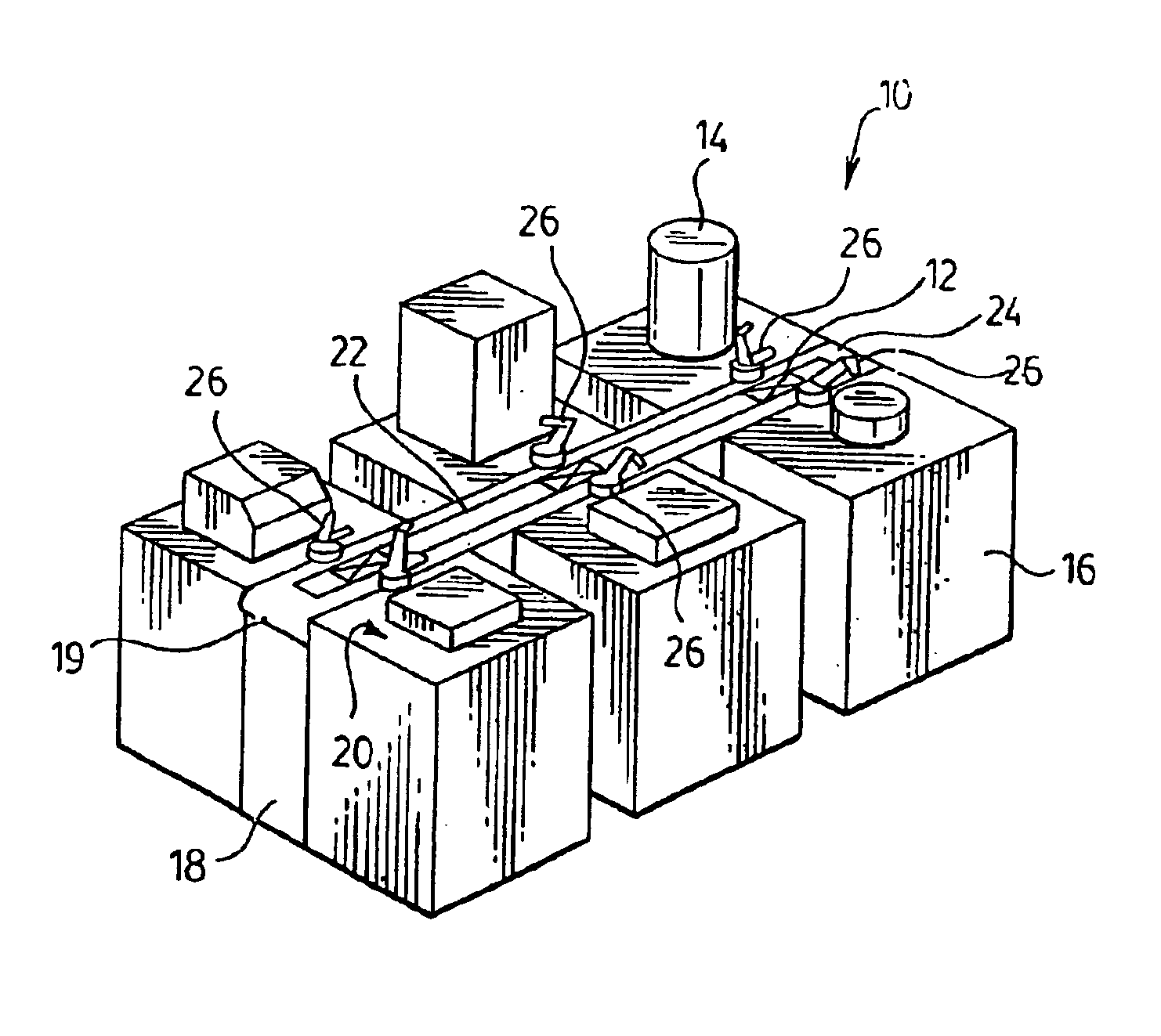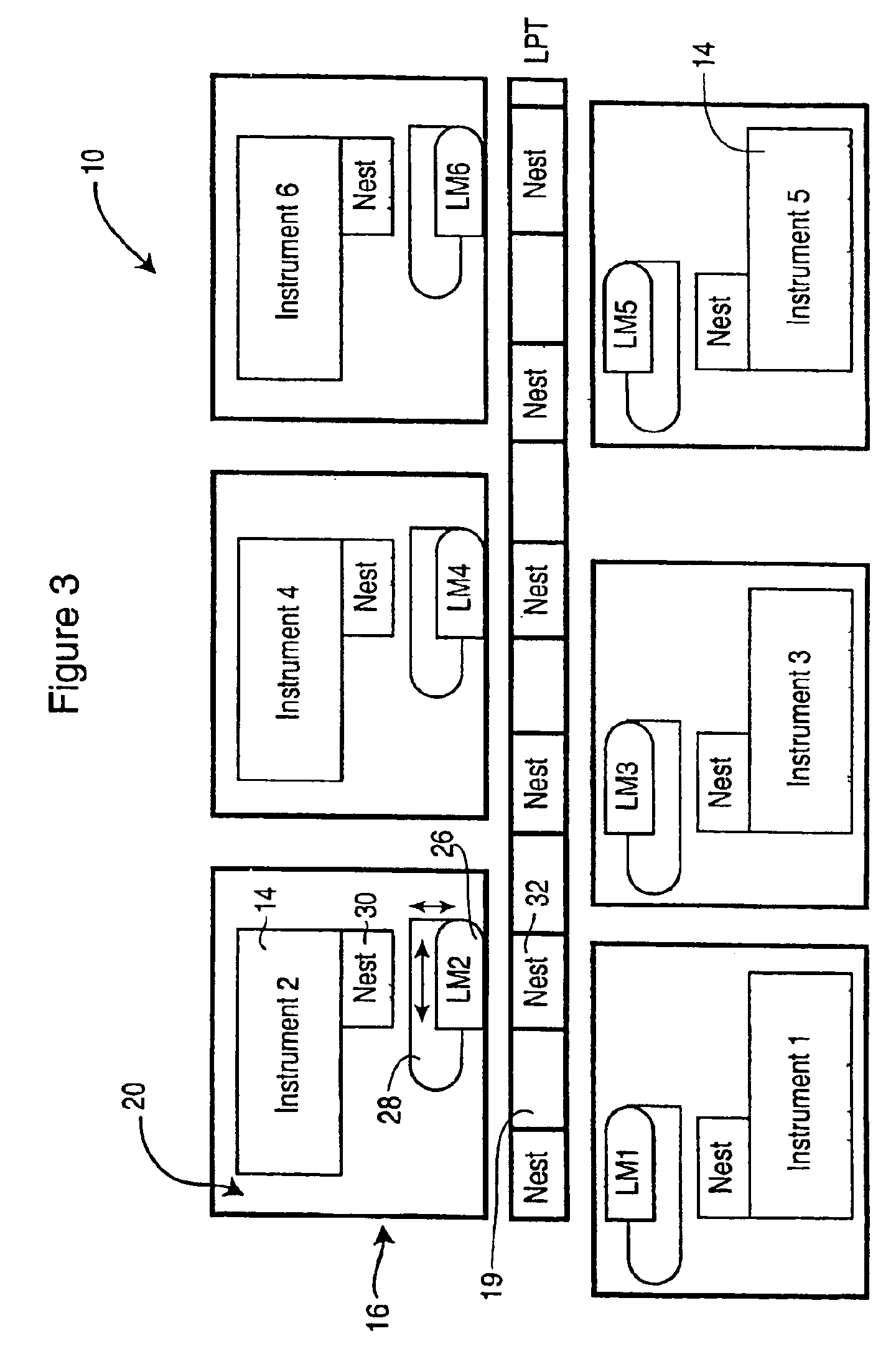Modular robotic system and method for sample processing
a robotic system and module technology, applied in the field of automatic robotic systems, can solve the problems of reducing the rate of sample processing, affecting the adaptability of dedicated systems, and affecting the efficiency of sample processing,
- Summary
- Abstract
- Description
- Claims
- Application Information
AI Technical Summary
Benefits of technology
Problems solved by technology
Method used
Image
Examples
Embodiment Construction
[0034]Referring to FIG. 1, a robotic system 10 is shown for processing a variety of samples 12 in a random flow by different process instruments 14. The robotic system 10 encompasses a method for processing the samples 12 using labware such as microtiterplates, filterplates, pipette-tip boxes and the like (not shown). The robotic system 10 has a modular architecture, consisting of a central backbone 18 and an arrangement of detachable modules 16 coupled to the backbone 18. The modules 16 carry the process instruments 14 for effecting a specific operation on the samples 12, preferably in sequence. The process instruments 14 can be mounted on a tabletop 20 of the modules 16, underneath the table 20, or on levels above the tabletop 20 as further described below. The structure of the robotic system 10 facilitates the attachment of the modules 16 on both sides of the backbone 18, meaning that one-sided or double-sided robotic systems 10 can be built. Preferably, the modules 16 represent ...
PUM
| Property | Measurement | Unit |
|---|---|---|
| length | aaaaa | aaaaa |
| support structure | aaaaa | aaaaa |
| heights | aaaaa | aaaaa |
Abstract
Description
Claims
Application Information
 Login to View More
Login to View More - R&D
- Intellectual Property
- Life Sciences
- Materials
- Tech Scout
- Unparalleled Data Quality
- Higher Quality Content
- 60% Fewer Hallucinations
Browse by: Latest US Patents, China's latest patents, Technical Efficacy Thesaurus, Application Domain, Technology Topic, Popular Technical Reports.
© 2025 PatSnap. All rights reserved.Legal|Privacy policy|Modern Slavery Act Transparency Statement|Sitemap|About US| Contact US: help@patsnap.com



